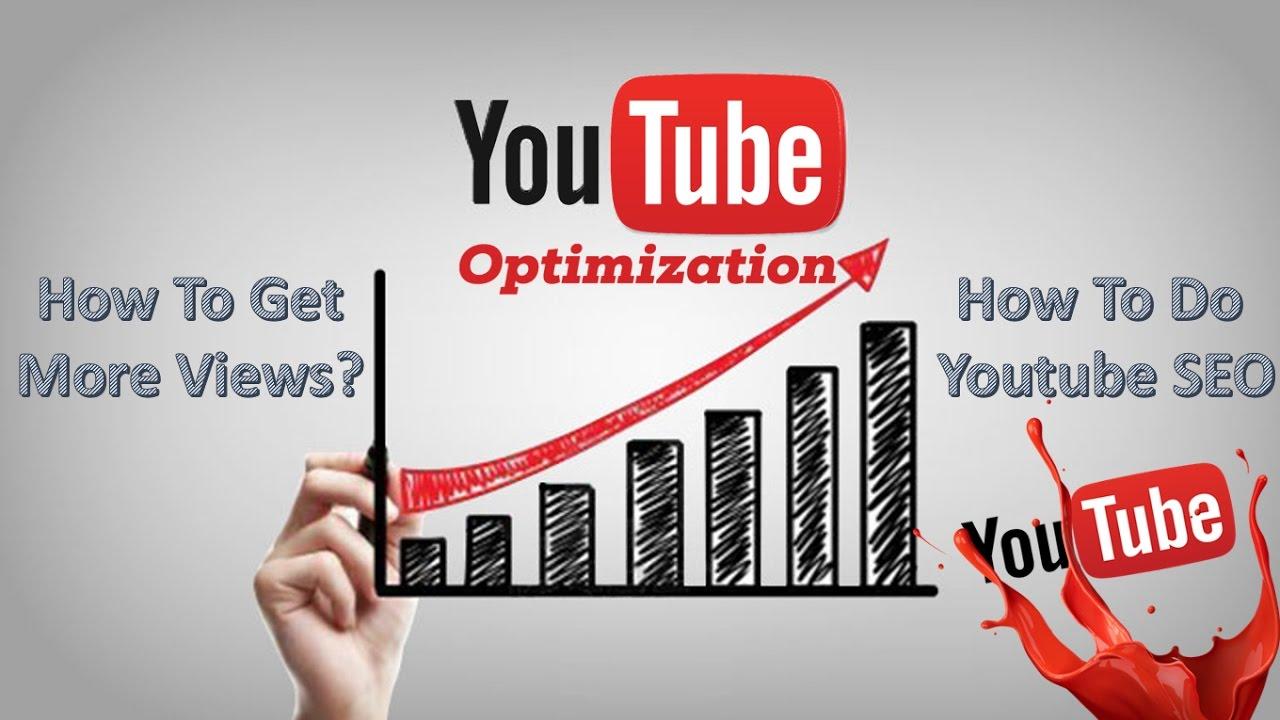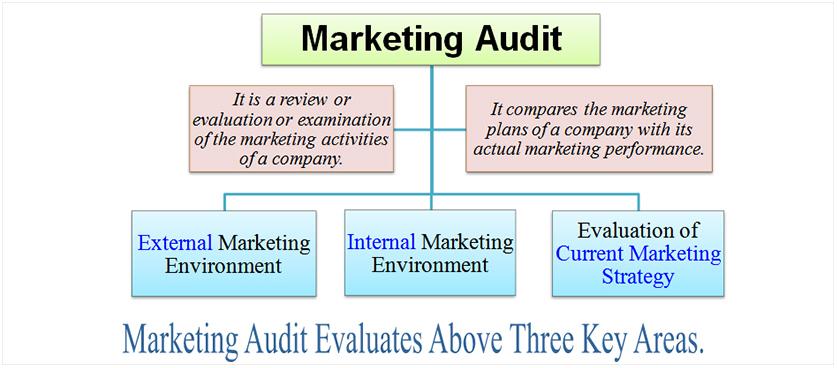
What is a Marketing Audit & How to Do One (+ Full Checklist)
Hey there! Have you ever felt like your marketing efforts are a bit out of sync? Maybe your campaigns aren’t hitting the mark, or your brand message seems to be getting lost in the noise. If that sounds familiar, it might be time to hit the reset button with a marketing audit. But what exactly is a marketing audit, and why should you care? Think of it as a comprehensive health check for your marketing strategy. It helps you identify strengths, weaknesses, and opportunities, ensuring you’re not just spinning your wheels but driving real results.
In this article, we’re going to break down the nuts and bolts of a marketing audit and walk you through the steps to conduct one effectively. Plus, we’ve got a handy checklist to ensure you cover all your bases. Whether you’re a seasoned marketer or just dipping your toes into the world of marketing analysis, you’ll find valuable insights to bolster your strategy and elevate your brand. Ready to uncover the secrets to optimizing your marketing efforts? Let’s dive in!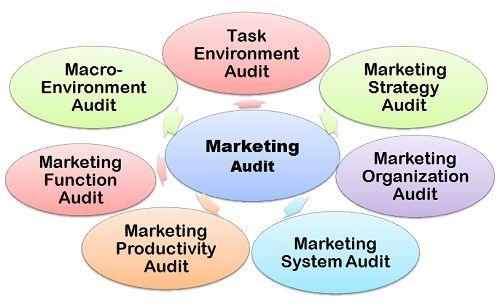
Understanding the Concept of a Marketing Audit
Conducting a marketing audit is an essential practice for any business aiming to refine its marketing strategy and improve overall performance. Think of it as a comprehensive health check for your marketing efforts—an examination that reveals what’s working, what isn’t, and where opportunities for growth exist. It provides a systematic assessment that helps in understanding how well your marketing strategies align with your business goals.
A marketing audit typically involves assessing various components of your marketing activities. This can encompass a broad range of areas, including:
- Market Research: Evaluating the insights gathered about your target audience.
- Competitor Analysis: Understanding where you stand in relation to your competition.
- Brand Positioning: Analyzing how your brand is perceived in the market.
- Digital Marketing Channels: Reviewing your performance on social media, email, SEO, and paid advertising.
- Content Strategy: Checking the effectiveness and reach of your content.
One of the significant advantages of a marketing audit is that it promotes transparency. By documenting your current marketing efforts and their outcomes, you can identify gaps and inefficiencies. This transparency can lead to better communication within your marketing team and with other departments, fostering a more cohesive approach to business strategy.
Moreover, a marketing audit serves as a foundational tool for making data-driven decisions. The insights gained can help in detecting trends and shifts in consumer behavior, enabling your team to adapt quickly. For instance, if you notice a decline in engagement on a specific platform, it might be time to rethink your content strategy or explore new channels to connect with your audience.
To facilitate the audit process, consider using a structured framework. Here’s a simple checklist that can guide you through:
| Audit Area | Key Questions |
|---|---|
| Market Analysis | Who is your target audience? What are their needs? |
| Competitor Review | Who are your main competitors? What are their strengths? |
| Content Effectiveness | What content types are performing best? Are they aligned with audience interests? |
| Digital Performance | What channels drive the most traffic? How is your SEO doing? |
it’s worth noting that a marketing audit isn’t a one-time event; it should be conducted regularly. As markets evolve and customer preferences change, periodic audits ensure your strategies remain relevant. By embracing this proactive approach, you position your business for sustained success and adaptability in a rapidly changing landscape.
Why Your Business Needs a Marketing Audit Now
In today’s fast-paced digital landscape, staying ahead of the competition requires more than just a solid product or service. Regularly conducting a marketing audit can be a game-changer for your business, offering insights that help refine your strategies and boost your overall performance.
One of the primary reasons to consider a marketing audit now is the ever-evolving nature of consumer behavior. With shifts in trends and preferences, what worked last year may no longer resonate with your audience today. A marketing audit enables you to:
- Identify gaps in your current marketing efforts.
- Assess your brand’s position in the market.
- Spot opportunities for growth and improvement.
Furthermore, a thorough audit can reveal how effectively your marketing channels are performing. By analyzing metrics from social media, email campaigns, and website traffic, you’ll gain clarity on what’s driving ROI and what needs tweaking. This is crucial because:
- You can allocate resources to the most effective channels.
- You can dismantle underperforming strategies instead of wasting time and money.
- You can enhance customer engagement and satisfaction through tailored approaches.
Another compelling reason to conduct a marketing audit now is to ensure compliance and alignment with industry standards. As regulations evolve, particularly concerning data privacy and advertising practices, a marketing audit will help you:
- Stay compliant with legal requirements.
- Avoid potential fines or reputational damage.
- Build trust with your audience by demonstrating transparency.
the insights gained from an audit can inspire innovation within your team. It encourages a culture of continuous improvement and fosters collaboration. When everyone understands the strengths and weaknesses of your marketing efforts, they can work together to develop creative solutions that drive your business forward.
the need for a marketing audit is more pressing than ever. By taking the time to scrutinize your existing strategies and performance, you can unlock new opportunities for success and ensure that your business not only survives but thrives in the competitive marketplace.
Key Benefits of Conducting a Marketing Audit
Conducting a marketing audit can be a game-changer for any business, large or small. By taking a step back and evaluating your marketing efforts, you can uncover insights that drive better results and enhance your overall strategy.
One of the most significant advantages of a marketing audit is its ability to identify strengths and weaknesses in your current approach. This thorough examination allows you to pinpoint what’s working and what’s not, creating a clear picture of your marketing performance.
Moreover, a marketing audit fosters data-driven decision-making. By analyzing performance metrics, customer feedback, and market trends, you can make informed choices that align with your business goals. This ensures that your marketing efforts are not only effective but also aligned with the evolving landscape of your industry.
Another key benefit is the opportunity for increased efficiency and optimization. Through the audit process, you can discover redundancies and areas where resources are not being utilized effectively. Streamlining these processes can lead to cost savings and a more focused marketing strategy.
Additionally, a marketing audit helps you stay competitive in your market. By assessing your competitors and industry benchmarks, you can adapt your strategies to meet or exceed the standards set by others in your field. This proactive approach allows you to stay ahead of the curve and respond to changes in consumer behavior.
Let’s not forget about the improvement of customer understanding. A marketing audit encourages you to delve into your target audience’s preferences, behaviors, and feedback. This knowledge allows you to tailor your messaging and campaigns, making them more relevant and impactful.
conducting a marketing audit can significantly enhance your brand reputation. By continuously evaluating and improving your marketing efforts, you demonstrate a commitment to quality and customer satisfaction. This can lead to increased trust and loyalty from your audience.
the benefits of a marketing audit are substantial and multifaceted. From identifying strengths and weaknesses to improving efficiency and enhancing customer understanding, the insights gained from this process can propel your marketing strategy to new heights.
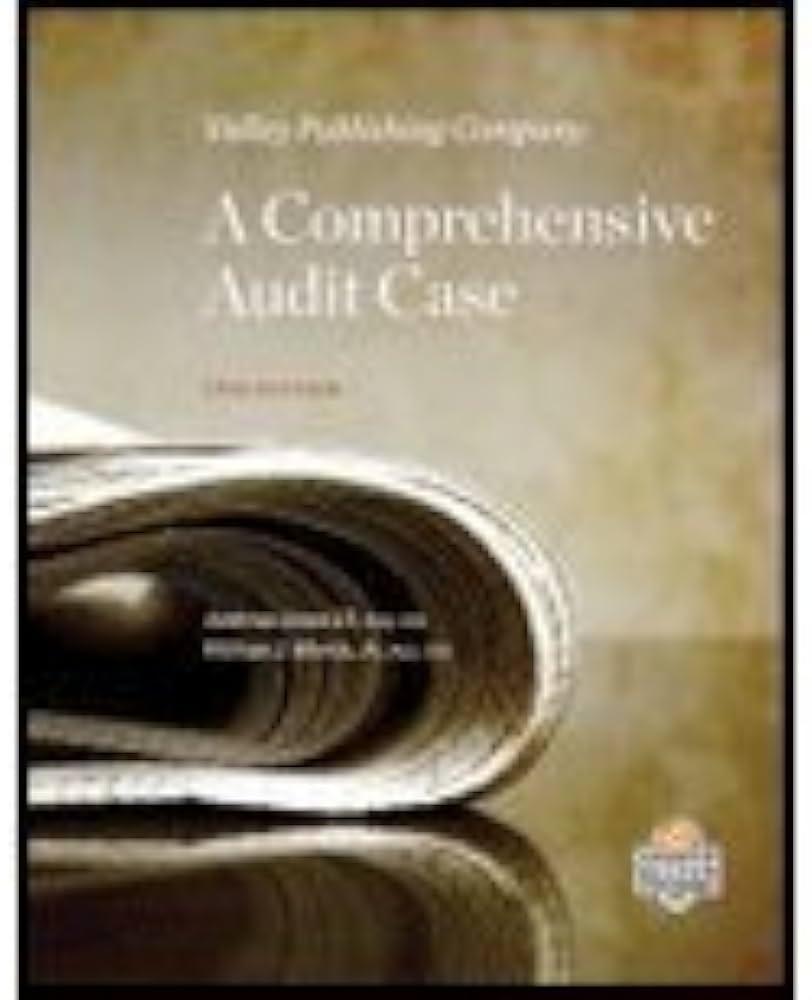
The Essential Components of a Comprehensive Audit
When embarking on a marketing audit, it’s crucial to understand the essential components that will form the backbone of a thorough evaluation. Each element plays a vital role in piecing together a comprehensive picture of your current marketing efforts and highlighting areas for improvement.
- Objective Setting: Before diving into data, define clear objectives for your audit. What do you hope to achieve? Understanding your goals helps maintain focus and provides a benchmark for measuring success.
- Data Collection: Gather quantitative and qualitative data from various sources. This includes website analytics, social media metrics, customer feedback, and sales data. Ensure you have a well-rounded view of your current state.
- SWOT Analysis: A SWOT (Strengths, Weaknesses, Opportunities, Threats) analysis is essential. It helps identify internal and external factors that can affect your marketing strategy. This can guide you in leveraging strengths and mitigating weaknesses.
- Competitive Analysis: Evaluate your competitors. Understanding their strategies, strengths, and weaknesses can provide insights into market trends and customer preferences, allowing you to adjust your own tactics accordingly.
- Audience Segmentation: Who are your customers? Analyze demographics, psychographics, and behaviors to create detailed customer personas. This insight is invaluable for tailoring your marketing messages.
- Channel Review: Assess all marketing channels currently in use, including social media, email, PPC, and content marketing. Determine which channels are performing well and which ones may need more attention or a complete overhaul.
- Budget Analysis: Review your marketing budget against the performance of each channel and campaign. Identifying areas of overspending or underspending can help allocate resources more effectively in the future.
- Performance Metrics: Establish key performance indicators (KPIs) to measure the success of your marketing efforts. These metrics should reflect your objectives and help gauge progress over time.
Compiling these components into a cohesive audit report is crucial for making informed decisions moving forward. The insights derived from this comprehensive analysis can steer your marketing strategies, align your team’s efforts, and ultimately drive better results.
| Component | Description |
|---|---|
| Objective Setting | Define what you want to achieve with your audit. |
| Data Collection | Gather relevant data from multiple sources. |
| SWOT Analysis | Identify strengths, weaknesses, opportunities, and threats. |
| Competitive Analysis | Evaluate competitors to gain market insights. |
| Audience Segmentation | Analyze customer demographics and behaviors. |
| Channel Review | Assess the performance of marketing channels. |
| Budget Analysis | Review spending against performance. |
| Performance Metrics | Establish KPIs to measure success. |
How to Prepare for Your Marketing Audit
Preparing for a marketing audit can feel overwhelming, but with a structured approach, you can streamline the process and ensure a thorough evaluation of your marketing practices. Start by gathering all relevant materials that reflect your current marketing activities. This includes:
- Marketing Plans: Collect your strategic documents outlining your marketing goals and objectives.
- Campaign Data: Assemble information from various campaigns, including email marketing, social media, and content marketing.
- Analytics Reports: Access data from Google Analytics, social media insights, and other analytics tools to track performance.
- Customer Feedback: Gather surveys, reviews, and testimonials that provide insights into customer perceptions.
Next, it’s essential to clearly define your objectives for the audit. Ask yourself what you aim to achieve. Are you looking to improve your ROI, enhance brand awareness, or optimize specific campaigns? Having clear goals will guide your analysis and help you focus on the areas that matter most.
Once you’ve collected your data and defined your objectives, consider establishing a timeline for your audit. This keeps you organized and ensures you allocate the necessary time for each segment of your marketing strategy. A simple timeline might look like this:
| Phase | Duration | Activities |
|---|---|---|
| Data Collection | 1 Week | Gather marketing materials and analytics |
| Analysis | 2 Weeks | Evaluate performance against objectives |
| Reporting | 1 Week | Compile findings and recommendations |
During the analysis phase, focus on examining key metrics that align with your goals. Look for trends, outliers, and areas of success or underperformance. Be sure to assess:
- Audience Engagement: How well are you connecting with your target demographics?
- Conversion Rates: Are your leads turning into customers effectively?
- Cost Per Acquisition: Are you spending wisely on marketing channels?
- Brand Consistency: Is your messaging coherent across all platforms?
don’t forget to involve your team in the auditing process. Gather insights and feedback from different departments such as sales, customer service, and product development. Their perspectives can uncover blind spots and foster a collaborative environment that enhances your marketing strategies.
By following these steps, you’ll be well on your way to conducting a comprehensive marketing audit that provides actionable insights and drives your marketing efforts forward!

Step-by-Step Guide to Conducting Your Audit
Conducting an effective marketing audit requires a systematic approach. By breaking the process into manageable steps, you can ensure a thorough evaluation of your marketing efforts. Here’s how to get started:
- Define Your Goals: Begin by identifying what you hope to achieve with the audit. Are you looking to improve conversion rates, enhance brand awareness, or optimize your social media strategy? Clear goals will guide your analysis.
- Gather Data: Collect all relevant data, including sales figures, website analytics, social media metrics, and customer feedback. This quantitative information is crucial for an informed audit.
- Review Marketing Materials: Take a close look at your current marketing assets. This includes advertisements, brochures, email campaigns, and social media posts. Assess if they align with your brand message and target audience.
Next, it’s important to analyze the competitive landscape. Understanding where you stand in relation to your competitors can provide valuable insights:
- Identify Your Competitors: Make a list of key competitors in your industry. Consider both direct competitors and those providing alternative solutions.
- Analyze Their Strategies: Review their marketing tactics, messaging, and customer engagement. What are they doing well? Where are the gaps you can exploit?
Once you have a good grasp on your market and competitors, shift your focus to your audience:
- Evaluate Customer Personas: Confirm that your customer personas are accurate and reflective of your current audience. Are there any shifts in demographics or preferences that you need to consider?
- Conduct Surveys or Interviews: Direct feedback from customers can highlight strengths and weaknesses in your marketing strategy. Use this information to refine your approach.
Now that you have comprehensive data, it’s time to compile your findings:
| Area of Focus | Findings | Recommendations |
|---|---|---|
| Website Performance | High bounce rate on landing pages | Optimize content for engagement |
| Social Media Engagement | Low interaction on posts | Increase frequency and variety of content |
| Email Marketing | High unsubscribe rate | Segment lists for targeted campaigns |
develop an action plan based on your insights. This should include:
- Prioritized Initiatives: Focus on high-impact changes that align with your goals.
- Set Clear Metrics: Establish how you will measure the success of your improvements.
- Establish a Timeline: Create a realistic timeline for implementing changes to keep your team accountable.
With a clear roadmap laid out, you can now implement your marketing audit findings and keep refining your strategies. Regularly revisiting and adjusting your audit process will help maintain your marketing effectiveness and adaptability in an ever-changing landscape.

Evaluating Your Current Marketing Strategy
When it comes to refining your marketing efforts, the first step is to take a hard look at what you’re currently doing. Evaluating your existing strategy is crucial for identifying strengths, weaknesses, opportunities, and threats. This process not only helps you understand the effectiveness of your current tactics but also lays the groundwork for implementing changes that can lead to better results.
Start by assessing your target audience. Are you reaching the right people? Utilize data analytics tools to analyze demographics, behavior, and engagement metrics. Understanding who your audience is will inform every aspect of your strategy, from messaging to channel selection.
Next, evaluate your marketing channels. Are you utilizing a mix of both digital and traditional methods? Consider the following:
- Social Media: Which platforms are driving the most engagement?
- Email Marketing: Are your open and click-through rates meeting industry standards?
- Content Marketing: Is your content resonating with your audience?
- PPC and SEO: Are you seeing a return on investment from your paid campaigns?
Keep a close eye on your messaging and branding. Consistency is key. Ensure that your brand voice remains cohesive across all platforms. If your messaging has shifted over time, it might be time for a refresh to ensure it aligns with your current goals and audience expectations.
Don’t forget to review your budget allocation. Are you investing enough in high-performing channels? A detailed breakdown of your spending can help identify areas for improvement. Consider the following table to assist in organizing your budget:
| Channel | Current Budget | Performance Metrics |
|---|---|---|
| Social Media Ads | $1,000 | CTR: 3% |
| Email Marketing | $500 | Open Rate: 25% |
| SEO | $700 | Traffic Increase: 15% |
Lastly, solicit feedback from both your team and your audience. Internal insights can reveal operational gaps, while customer feedback can highlight areas for improvement. Surveys, polls, and direct interactions can provide valuable nuggets of information about what’s working and what’s not.
By taking the time to thoroughly evaluate your current marketing strategy, you’ll be well-equipped to make informed decisions. This assessment is not just a routine checkup; it’s a vital part of aligning your marketing efforts with your business goals and ensuring long-term success.

Analyzing Your Target Audience and Market Position
Understanding your target audience is crucial for the effectiveness of any marketing audit. By analyzing the demographics, behaviors, and preferences of your potential customers, you can tailor your strategies to better meet their needs. Consider the following elements when evaluating your audience:
- Demographics: Age, gender, income level, education, and geographic location.
- Psychographics: Interests, values, lifestyle choices, and purchasing motivations.
- Buying Behavior: Frequency of purchases, brand loyalty, and spending habits.
Utilizing tools like surveys, social media analytics, and market research reports can provide valuable insights into your audience’s characteristics. This data empowers you to create more personalized marketing messages, enhancing engagement and conversion rates.
In addition to understanding your audience, evaluating your market position is essential. This involves assessing where you stand in relation to your competitors and identifying your unique selling propositions (USPs). A few key aspects to consider include:
- Competitor Analysis: Who are your main competitors, and what are their strengths and weaknesses?
- Market Trends: What are the current trends in your industry, and how can you leverage them?
- SWOT Analysis: Identify your strengths, weaknesses, opportunities, and threats to clarify your position in the market.
To visually represent your market position, consider creating a comparative table. Here’s a simple format to get you started:
| Competitor | Strengths | Weaknesses |
|---|---|---|
| Competitor A | Strong brand recognition | Higher pricing |
| Competitor B | Wide product range | Poor customer service |
| Your Brand | Innovative solutions | Limited awareness |
By periodically revisiting your audience analysis and market position, you ensure that your marketing strategies stay relevant and effective. The landscape of consumer behavior and competition is ever-changing, and staying informed will help you adapt your tactics to maintain a competitive edge. Remember, a well-executed marketing audit not only clarifies your current standing but also paves the way for future growth and success.
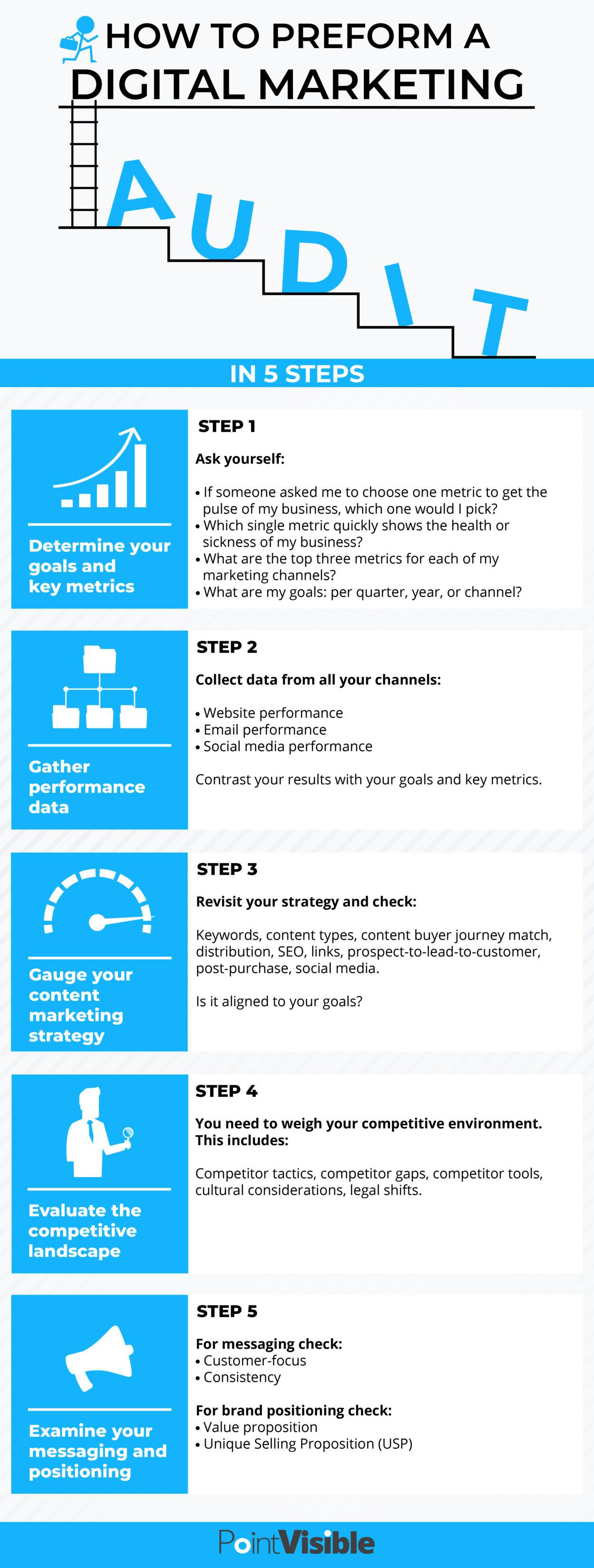
Assessing Your Digital Marketing Efforts
When it comes to gauging the effectiveness of your marketing strategies, the first step is to assess your digital marketing efforts critically. This process allows you to identify what’s working, what isn’t, and where you can fine-tune your approach for greater impact. A thorough assessment can transform your campaigns, driving better engagement and more conversions.
Start by analyzing your website traffic. Use tools like Google Analytics to measure key metrics such as page views, bounce rate, and session duration. These indicators reveal how well your website attracts and retains visitors. Consider the following questions:
- What are the most visited pages on your site?
- Where do your visitors come from (organic search, social media, referrals)?
- Are users navigating through your site as intended?
Next, evaluate your social media performance. Each platform requires a tailored strategy, so it’s crucial to assess how your content resonates with your audience across different channels. Look into the following metrics:
- Engagement rates (likes, shares, comments)
- Follower growth and demographics
- Traffic generated to your website from social media
Content marketing is another vital area to review. Examine the effectiveness of your blogs, videos, and other content formats. Ask yourself:
- Is your content relevant and valuable to your audience?
- How often is your content shared or linked to by other sites?
- Are you tracking conversions resulting from specific content pieces?
To give you a clearer picture, consider creating a digital marketing audit table to summarize your findings:
| Channel | Key Metric | Current Performance | Improvement Areas |
|---|---|---|---|
| Website | Bounce Rate | 50% | Improve content relevance and site navigation |
| Social Media | Engagement Rate | 3% | Increase interactive posts and community engagement |
| Content | Conversion Rate | 2% | Optimize CTAs and align content with audience needs |
don’t overlook the importance of your email marketing efforts. Review open rates, click-through rates, and unsubscribe rates to gauge how well your messages resonate with your subscribers. Consider segmenting your email lists to personalize content further, ensuring it meets the diverse needs of your audience.
By thoroughly assessing these critical areas, you’ll position yourself to make informed decisions about your digital marketing strategies. This foundational understanding not only highlights current successes but also uncovers opportunities for growth, setting the stage for more effective marketing campaigns in the future.

Reviewing Your Content and Messaging Consistency
When conducting a marketing audit, one of the most critical components is evaluating your content and messaging for consistency. This step ensures that your brand voice resonates across all platforms, maintaining a cohesive identity that your audience recognizes and trusts. Consistency in messaging not only enhances brand recognition but also fosters customer loyalty.
Begin by reviewing all your marketing channels: your website, social media profiles, email campaigns, and promotional materials. As you do this, look for the following:
- Brand Voice: Is your tone formal, casual, or somewhere in between? Ensure it aligns with your brand identity.
- Visual Elements: Are your logos, color schemes, and typography consistent? Visual consistency reinforces your brand image.
- Key Messages: Are your core messages repeated across different platforms? Consistency in messaging helps drive your point home.
Next, assess the language you use. Jargon or overly technical terms can alienate your audience. Opt for clear, engaging language that reflects your brand’s personality. This is particularly important in:
- Blog Posts: Ensure your articles reflect your unique voice while addressing the needs of your audience.
- Social Media: Tailor your messaging to fit the platform while maintaining the overall brand tone.
- Email Newsletters: Capture your readers’ attention with a consistent yet engaging format and language.
To track consistency effectively, consider creating a content style guide. This document should outline:
| Element | Description |
|---|---|
| Brand Voice | Define the tone and style expected in all communications. |
| Visual Guidelines | Specify logos, colors, and fonts to be used consistently. |
| Key Messaging | List of essential messages to communicate across platforms. |
| Examples | Provide samples of preferred language and visual elements. |
solicit feedback from your team and even your audience. Sometimes external perspectives can highlight inconsistencies that you may overlook. Monitor engagement metrics to see how your audience responds to different messages. If certain messages yield higher engagement, consider reinforcing those elements throughout your content strategy.
By diligently reviewing your content and ensuring your messaging remains consistent, you not only strengthen your brand identity but also foster trust and loyalty among your audience. Remember, consistency is key in establishing a lasting relationship with your customers.

Measuring Performance Metrics and KPIs
When it comes to evaluating your marketing efforts, understanding how to measure performance metrics and KPIs is essential. These indicators provide critical insights into the effectiveness of your strategies and help you make informed decisions moving forward. Here are some key metrics to consider:
- Conversion Rate: This metric tells you the percentage of visitors who complete a desired action, such as making a purchase or signing up for a newsletter. A higher conversion rate indicates that your marketing efforts are resonating with your audience.
- Customer Acquisition Cost (CAC): Understanding how much you spend to acquire a new customer is crucial. By measuring CAC, you can assess the efficiency of your marketing channels and adjust your strategies accordingly.
- Return on Investment (ROI): This is a fundamental metric that helps you determine the profitability of your marketing campaigns. Calculating ROI allows you to see what’s working and what needs to be improved.
- Website Traffic: Monitoring the volume and source of your website visitors can reveal a lot about your marketing effectiveness. Track where your traffic is coming from—organic search, paid ads, social media, etc.—to refine your strategies.
- Engagement Metrics: Look at likes, shares, comments, and time spent on your content. These metrics indicate how well your audience is connecting with your material.
To effectively track these metrics, consider creating a comprehensive dashboard that consolidates data from various channels. Tools like Google Analytics, HubSpot, and SEMrush offer robust reporting features to make this process seamless. You’ll want to focus on the following key performance indicators:
| Metric | Description | Why It Matters |
|---|---|---|
| Website Bounce Rate | Percentage of visitors who leave after viewing only one page. | A high bounce rate may indicate that your landing pages aren’t engaging or relevant. |
| Email Open Rate | Percentage of recipients who open your marketing emails. | This indicates how well your subject lines and audience targeting are performing. |
| Social Media Reach | The number of unique users who see your content. | Helps you understand your brand’s visibility across platforms. |
Regularly reviewing these metrics not only provides insights into past marketing performance but also informs future strategies. By analyzing trends over time, you can identify successful tactics and areas needing improvement, ensuring your marketing audit remains dynamic and relevant.
make sure to communicate findings from your performance metrics across your team. Having clear, actionable insights encourages collaboration and aligns everyone towards common goals. With the right focus on , your marketing audit can be a powerful tool for growth and improvement.
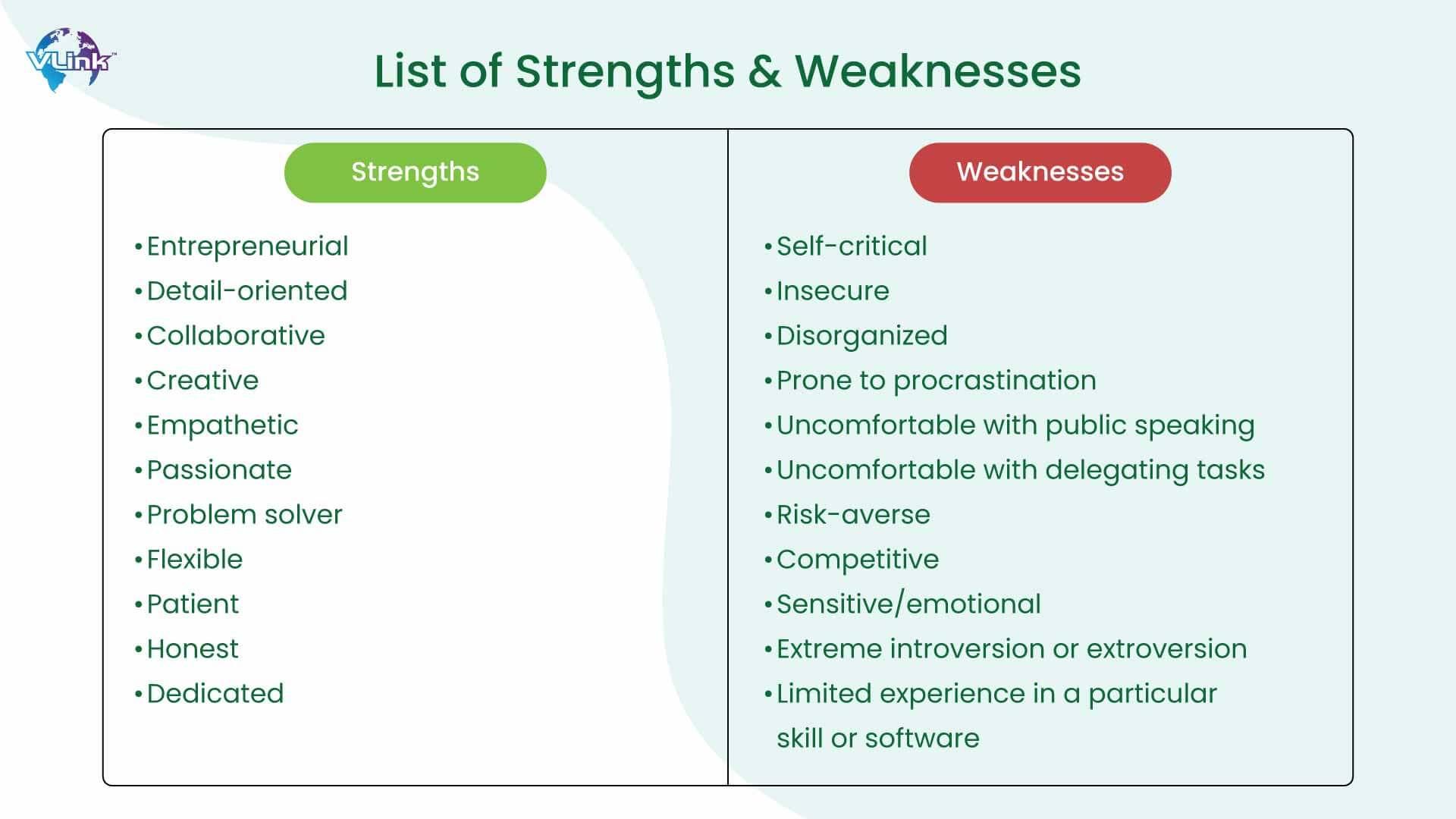
Identifying Strengths, Weaknesses, Opportunities, and Threats
When diving into a marketing audit, one of the most effective tools at your disposal is a SWOT analysis. This framework encourages you to take an honest look at your organization, helping to crystallize your strategic planning. By identifying your strengths, weaknesses, opportunities, and threats, you pave the way for informed decision-making and enhanced marketing effectiveness.
Strengths
Your strengths are the internal characteristics that give your business an advantage over competitors. Consider factors such as:
- Brand recognition: A well-established brand can lead to customer loyalty.
- Unique selling propositions: What sets your product or service apart?
- Expertise in niche areas: Specialized knowledge can attract targeted audiences.
Identifying these strengths allows you to leverage them in your marketing efforts, ensuring you’re promoting what you do best.
Weaknesses
Next, it’s vital to confront your weaknesses. Acknowledging these areas can lead to actionable improvements. Common weaknesses might include:
- Limited online presence: In today’s digital age, visibility is critical.
- Lack of resources: Insufficient budget or manpower can hinder growth.
- Product limitations: Are there features that customers want but you can’t provide?
By honestly assessing these factors, you can devise strategies to mitigate their impact.
Opportunities
Opportunities are external factors that your business can capitalize on to grow and improve. Keep an eye out for:
- Emerging market trends: What changes in consumer behavior can you address?
- Technological advancements: Are there new tools that can enhance your marketing efforts?
- Partnerships or collaborations: Could teaming up with another brand amplify your reach?
Identifying opportunities can direct your marketing strategies toward areas with the highest potential for success.
Threats
Lastly, don’t shy away from identifying threats. These are external challenges that could jeopardize your success. Pay attention to:
- Competitive pressures: Are new entrants or existing competitors gaining traction?
- Changing regulations: How might new laws impact your marketing practices?
- Economic downturns: Consider how shifts in the economy could affect consumer spending.
By recognizing these threats, you can develop contingency plans to safeguard your marketing efforts.
SWOT Analysis Table
| Category | Details |
|---|---|
| Strengths | Brand loyalty, unique products, expert team |
| Weaknesses | Poor online presence, limited resources |
| Opportunities | Market expansion, tech innovations |
| Threats | Increased competition, regulatory changes |
Engaging in this comprehensive analysis not only equips you with a clearer view of your current positioning but also empowers you to make strategic marketing decisions that align with your business goals. By understanding the interplay between strengths, weaknesses, opportunities, and threats, you’ll be better prepared to take your marketing efforts to the next level.
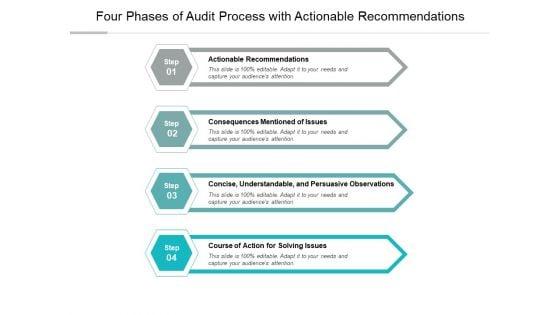
Creating Actionable Recommendations from Your Findings
Once you’ve completed your marketing audit, the next vital step is to transform your findings into actionable recommendations. This process is about more than just identifying problems; it’s about devising practical solutions that can drive your marketing strategy forward. Here’s how to effectively turn insights into actions:
Prioritize Your Findings
Not all findings are created equal. Focus on those that have the most significant potential impact. You can categorize your findings into:
- High Impact: Quick wins that can be implemented immediately.
- Medium Impact: Changes that require some time and resources but can lead to substantial benefits.
- Low Impact: Minor adjustments that can be scheduled for later.
Develop SMART Recommendations
When formulating your recommendations, ensure they are SMART: Specific, Measurable, Achievable, Relevant, and Time-bound. This framework not only clarifies your goals but also provides a clear path for implementation. For instance:
| Recommendation | SMART Criteria |
|---|---|
| Increase email engagement rates | Specific: Targeted email content; Measurable: Increase by 15%; Achievable: Use A/B testing; Relevant: Aligns with audience interests; Time-bound: within 3 months. |
| Revamp social media strategy | Specific: Focus on Instagram and LinkedIn; Measurable: Gain 500 new followers; Achievable: Utilize ads and collaborations; Relevant: Enhance brand visibility; Time-bound: within 6 months. |
Involve Your Team
Engaging your team in the recommendation process is crucial. They can offer insights and suggestions that you might have overlooked. Schedule a brainstorming session where team members can contribute to refining these recommendations and assigning responsibilities. This collaborative approach fosters ownership and accountability in implementing the changes.
Create an Action Plan
Once your recommendations are defined, develop a detailed action plan. This should include:
- Tasks and responsibilities
- Deadlines for each task
- Resources needed
- Metrics for measuring success
Monitor and Adjust
Implementation is an ongoing process. After you’ve set your recommendations in motion, it’s essential to monitor progress regularly and be willing to adjust your strategy as necessary. Use analytics tools to track the effectiveness of your changes and gather feedback from your team and audience. This continuous improvement cycle will ensure your marketing strategy evolves alongside your business needs.
turning your marketing audit findings into actionable recommendations is a transformative step that can significantly enhance your marketing effectiveness. By prioritizing findings, employing the SMART framework, involving your team, creating a structured action plan, and maintaining flexibility in your approach, you can lay the groundwork for sustained marketing success.
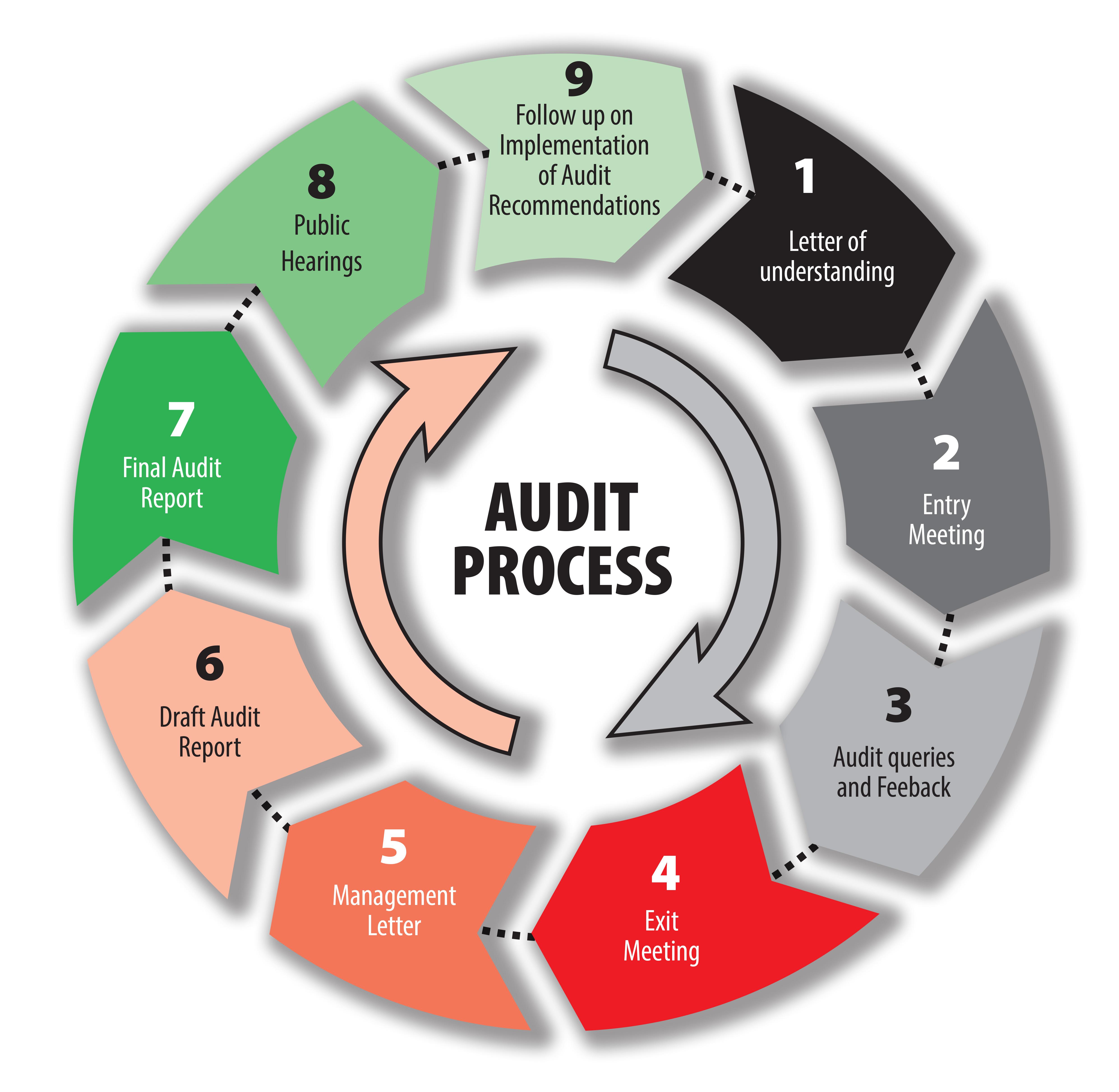
Implementing Changes and Tracking Progress After the Audit
Once your marketing audit is complete, it’s time to put the findings into action. Implementing changes based on your audit can feel overwhelming, but breaking it down into manageable steps can make the process smoother and more effective. Start by prioritizing the key areas that need improvement based on their potential impact on your marketing goals.
- Identify Key Insights: Review the audit findings and extract the most critical insights. These should focus on areas that directly affect your brand’s performance.
- Set Clear Goals: Define what success looks like for each area of improvement. Ensure these goals are SMART (Specific, Measurable, Achievable, Relevant, Time-bound) to provide a clear roadmap.
- Develop an Action Plan: Create a detailed action plan that outlines each step you need to take to implement the changes. This should include who will be responsible for each task and the deadlines for completion.
After implementing changes, tracking progress is crucial. You want to ensure that your efforts are leading to the desired outcomes. Here are some effective ways to monitor your progress:
- Regular Check-ins: Schedule consistent reviews to evaluate the progress of your action plan. This could be weekly or monthly, depending on the scope of the changes implemented.
- Utilize Analytics Tools: Leverage tools like Google Analytics, social media insights, and email marketing metrics to gather data on your marketing performance.
- Adjust as Necessary: Be prepared to pivot your strategy based on what the data shows. Flexibility can be key to successful marketing.
To visualize your progress clearly, consider using a tracking table. Here’s a simple example of what this could look like:
| Action Item | Owner | Status | Completion Date |
|---|---|---|---|
| Update website SEO | Marketing Team | In Progress | MM/DD/YYYY |
| Launch new social media campaign | Social Media Manager | Not Started | MM/DD/YYYY |
| Analyze email marketing performance | Email Specialist | Completed | MM/DD/YYYY |
Remember, the goal is not just to make changes but to create a culture of continuous improvement within your marketing team. Encourage feedback and ideas from team members, as they can offer valuable insights that can further sharpen your strategies.
Lastly, document the journey. Keeping records of what changes were made, when they were implemented, and their outcomes will not only help in assessing progress but also in planning future audits. This documentation acts as a reference that can guide your team in making informed decisions down the line.
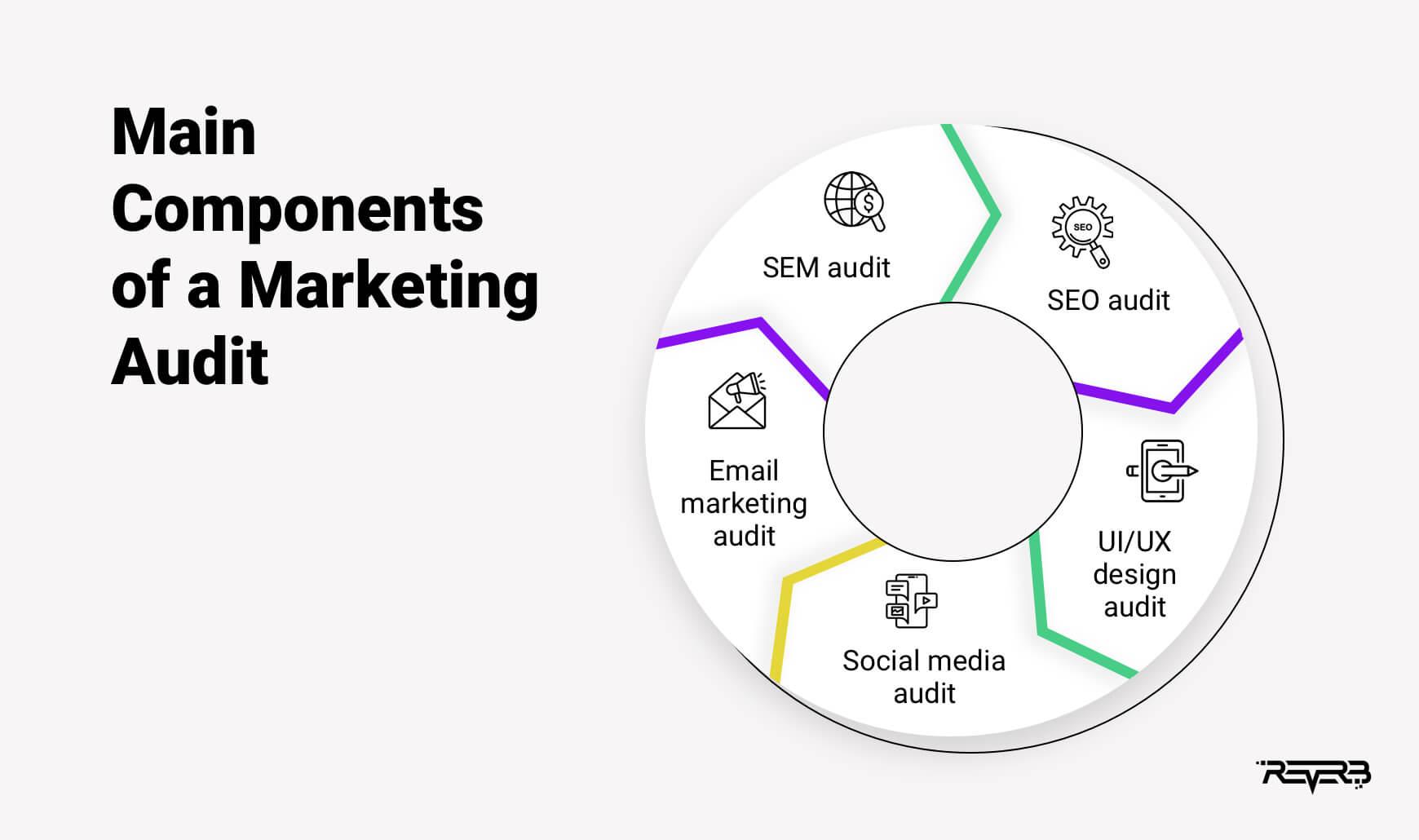
Final Thoughts on Making Your Marketing Audit Count
As you wrap up your marketing audit, it’s important to reflect on the insights you’ve gathered and how they can be leveraged for future growth. A marketing audit isn’t just a one-off task; it’s a vital process that can transform your marketing strategy when approached correctly. Here are some key takeaways to ensure that your audit truly makes an impact.
Focus on Implementation: After identifying strengths and weaknesses, the next step is to create an actionable plan. Use your findings to establish concrete goals and tactics. Aim to prioritize initiatives that promise the highest return on investment (ROI). Consider creating a roadmap that outlines what needs to be done, who will do it, and by when.
Continuous Monitoring: A marketing audit should not be a stagnant document. Treat it as a living, breathing part of your marketing strategy. Set up a schedule for regular reviews to track progress against the goals established from your audit. This will help you adapt to market changes and evolving consumer behaviors effectively.
Engage Your Team: Involve your marketing team in the auditing process. Encourage them to provide input and feedback on the findings. This not only fosters a sense of ownership but also encourages innovative ideas that may lead to improved tactics and methods. Team buy-in is crucial for a successful implementation of audit recommendations.
Utilize Technology: Don’t shy away from leveraging digital tools to facilitate your marketing audit. Various software can help you track performance metrics, analyze data, and visualize trends. Incorporating technology can streamline the process, making it easier to identify patterns and areas for improvement.
Stay Customer-Centric: Always keep your target audience in mind. Your audit should not just be about what’s working internally; it should also focus on how your marketing strategies resonate with customers. Conduct surveys or gather feedback to understand their perceptions. This can uncover insights that purely data-driven methods might miss.
Document Everything: Make sure to document your findings, decisions, and the rationale behind your strategies. This documentation will serve as a reference point for future audits and help maintain consistency in your marketing efforts. Plus, it can be invaluable for onboarding new team members or stakeholders.
Final Checklist: Before you consider your audit complete, run through this checklist:
| Item | Status |
|---|---|
| Defined Goals | ✔️ |
| Data Analysis Completed | ✔️ |
| Team Feedback Collected | ✔️ |
| Recommendations Documented | ✔️ |
| Implementation Plan Created | ✔️ |
the real value of a marketing audit lies in its potential impact on your business. By being thorough, collaborative, and forward-thinking, you can turn audit results into strategic actions that not only enhance performance but also drive new growth opportunities. Make your audit count—your future self will thank you!
Frequently Asked Questions (FAQ)
Q&A: What is a Marketing Audit & How to Do One (+ Full Checklist)
Q: What exactly is a marketing audit?
A: Great question! A marketing audit is a comprehensive review of your marketing strategies, goals, and performance. Think of it as a health check-up for your marketing efforts. It helps you identify what’s working, what isn’t, and where you can improve. By assessing everything from your branding to your digital presence, you can make informed decisions to optimize your strategy.
Q: Why should I conduct a marketing audit?
A: If you want your business to thrive, understanding your marketing landscape is crucial. A marketing audit provides clarity and direction. It helps you uncover gaps in your current strategies, identify opportunities for growth, and ensure that your marketing initiatives align with your overall business objectives. Plus, staying ahead of the competition is easier when you know your strengths and weaknesses!
Q: How often should I perform a marketing audit?
A: Ideally, you should conduct a marketing audit at least once a year. However, if you’re launching a new product, entering a new market, or experiencing significant changes in your business, it’s wise to conduct one more frequently. Regular audits keep you agile and responsive to market dynamics.
Q: What steps are involved in conducting a marketing audit?
A: The process can be broken down into several key steps:
- Define Your Objectives: What do you want to achieve with this audit?
- Gather Data: Collect data on your current marketing performance, including sales figures, website analytics, social media metrics, and customer feedback.
- Evaluate Your Marketing Mix: Analyze the 4 Ps—Product, Price, Place, and Promotion. How well are you meeting customer needs?
- Assess Your Brand Positioning: How do customers perceive your brand compared to competitors?
- Review Your Digital Presence: Examine your website, SEO, social media, and content strategy.
- Identify Opportunities and Gaps: Look for areas where improvements can be made or where new opportunities exist.
- Develop Recommendations: Create actionable steps based on your findings.
- Create an Action Plan: Prioritize your recommendations and set timelines for implementation.
Q: What should I include in my marketing audit checklist?
A: Here’s a robust checklist to get you started:
- Marketing Goals: Are your current goals SMART (Specific, Measurable, Achievable, Relevant, Time-bound)?
- Target Audience: Have you clearly defined your target customer segments?
- SWOT Analysis: What are your strengths, weaknesses, opportunities, and threats?
- Competitor Analysis: Who are your main competitors, and what are they doing well?
- Content Review: Is your content engaging and aligned with audience interests?
- Digital Marketing: How effective is your SEO, email marketing, and social media strategy?
- Customer Feedback: What do customers say about your products or services?
- Performance Metrics: Are you tracking KPIs like ROI, customer acquisition cost, and conversion rates?
Q: Can I do a marketing audit myself, or do I need to hire an expert?
A: You can definitely conduct a marketing audit yourself, especially if you have a good grasp of your business and market. However, consider bringing in a marketing consultant if you want an unbiased perspective or if your audit uncovers complex issues that require specialized knowledge. Sometimes, a fresh set of eyes can make all the difference!
Q: What can I achieve by the end of a marketing audit?
A: By the end of your marketing audit, you should have a clear understanding of your marketing performance and actionable insights to enhance your strategy. You’ll be equipped to make smarter decisions, allocate resources more effectively, and ultimately drive better results for your business. It’s all about taking informed steps forward!
Ready to roll up your sleeves and dive into your marketing audit? It’s a game-changer for your business strategy!
In Summary
And there you have it! A comprehensive guide to understanding and conducting a marketing audit. By now, you should have a clear picture of what a marketing audit entails and the steps you need to take to perform one effectively. Remember, this isn’t just about checking boxes; it’s about gaining valuable insights that can propel your marketing strategies to new heights.
Think of your marketing audit as a wellness check for your business. Just as you’d go to the doctor for a health assessment, your marketing efforts need the same attention to detail. By regularly auditing your marketing, you can identify what’s working, what’s not, and where there are opportunities for growth.
So, grab that checklist and start diving into your marketing landscape. You’ll be amazed at the clarity and direction it can provide. Don’t forget, the key to successful marketing is not just doing more but doing better.
If you’re ready to take your marketing to the next level, it’s time to roll up your sleeves and get started. After all, a well-informed strategy is the best foundation for future success. Happy auditing!



